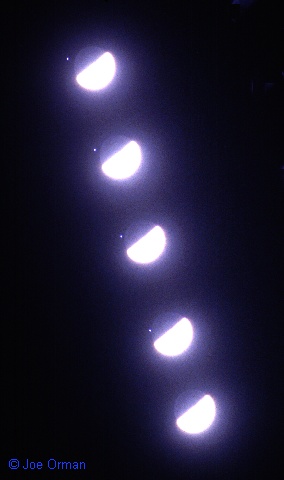
|
Credit & Copyright: Joe Orman
Explanation:
On May 21, viewed from the continental US,
a star winked out as it passed behind the dark limb of the
first-quarter
Moon.
The star,
Regulus, is hotter than the sun, about 69 light-years distant,
and shines in Earth's skies as the
brightest star in the
constellation Leo, the Lion.
The Moon is the brightest object in
the night sky and
is less than 1.5 light-seconds away.
As illustrated in this multiple-exposure photograph, such
lunar occultations of bright stars can be majestic
to watch.
Their exact timing depends on the observer's location but
they are not particularly rare occurrences.
Astronomers can use lunar occultations to
help map the surface of
the Moon.
|
January February March April May June July August September October November December |
| |||||||||||||||||||||||||||||||||||||||||||||||||||||||
NASA Web Site Statements, Warnings, and Disclaimers
NASA Official: Jay Norris. Specific rights apply.
A service of: LHEA at NASA / GSFC
& Michigan Tech. U.
Based on Astronomy Picture
Of the Day
Publications with keywords: Moon - occultation - regulus
Publications with words: Moon - occultation - regulus
See also:
